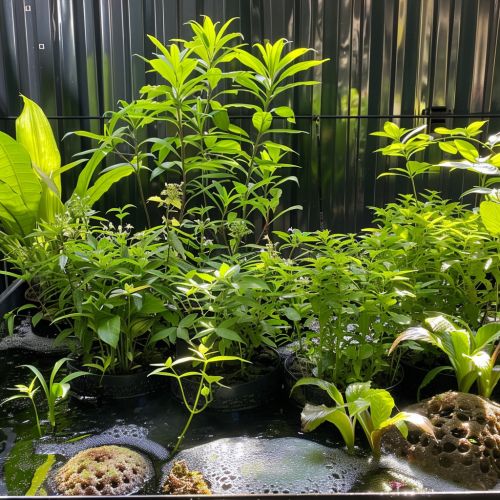Biofiltration
Introduction
Biofiltration is a pollution control technique that uses living material to capture and biologically degrade pollutants. It is commonly used for the treatment of wastewater, stormwater, and contaminated air. Biofiltration systems employ a variety of microorganisms, primarily bacteria, to break down contaminants into less harmful substances. This article delves into the mechanisms, applications, benefits, and challenges associated with biofiltration.
Mechanisms of Biofiltration
Biofiltration operates through a combination of physical, chemical, and biological processes. The primary mechanism involves the adsorption of pollutants onto a medium, followed by microbial degradation. The medium, often composed of soil, sand, or synthetic materials, provides a habitat for microorganisms and facilitates the filtration process.
Adsorption
Adsorption is the initial step in biofiltration, where pollutants adhere to the surface of the filter medium. This process is influenced by the surface area, porosity, and chemical properties of the medium. Adsorption efficiency can be enhanced by selecting materials with high surface areas and suitable chemical characteristics.
Microbial Degradation
Once adsorbed, pollutants are metabolized by microorganisms present in the biofilm. The biofilm is a thin layer of microbial cells and extracellular polymeric substances (EPS) that forms on the surface of the filter medium. Microbial degradation involves various biochemical pathways, depending on the type of pollutant and the microbial community. Aerobic and anaerobic processes can occur simultaneously, allowing for the breakdown of a wide range of contaminants.
Oxygen Transfer
Oxygen transfer is crucial for the aerobic degradation of pollutants. In biofiltration systems treating air, oxygen is naturally available, while in water treatment systems, oxygen must be supplied through aeration. Efficient oxygen transfer ensures that aerobic microorganisms remain active and effective in degrading pollutants.


Applications of Biofiltration
Biofiltration is employed in various environmental engineering applications, including wastewater treatment, stormwater management, and air pollution control.
Wastewater Treatment
Biofiltration is widely used in wastewater treatment plants to remove organic matter, nutrients, and pathogens. Systems such as trickling filters, rotating biological contactors, and submerged biofilters are common configurations. These systems provide a large surface area for biofilm development and efficient pollutant removal.
Stormwater Management
In stormwater management, biofiltration systems, also known as bioretention systems or rain gardens, are designed to treat runoff from urban areas. These systems capture and filter stormwater through a vegetated medium, removing pollutants such as sediments, nutrients, and heavy metals. The treated water is then either infiltrated into the ground or discharged into nearby water bodies.
Air Pollution Control
Biofiltration is also effective in controlling air pollution, particularly for the treatment of volatile organic compounds (VOCs) and odors from industrial processes. Biofilters for air treatment consist of a packed bed of organic or synthetic material, where microorganisms degrade airborne pollutants. This method is environmentally friendly and cost-effective compared to traditional air pollution control technologies.
Benefits of Biofiltration
Biofiltration offers several advantages over conventional treatment methods, including:
- **Environmental Sustainability**: Biofiltration relies on natural processes and materials, reducing the need for chemical additives and energy-intensive operations.
- **Cost-Effectiveness**: Biofiltration systems generally have lower operational and maintenance costs compared to mechanical and chemical treatment methods.
- **Versatility**: Biofiltration can be adapted to treat a wide range of pollutants in various environmental media, including water, air, and soil.
- **Enhanced Ecosystem Services**: In stormwater management, biofiltration systems provide additional benefits such as habitat creation, aesthetic enhancement, and groundwater recharge.
Challenges and Limitations
Despite its benefits, biofiltration faces several challenges and limitations:
- **Clogging**: Accumulation of particulate matter and biofilm growth can lead to clogging of the filter medium, reducing system efficiency and requiring regular maintenance.
- **Variable Performance**: The effectiveness of biofiltration can be influenced by environmental factors such as temperature, pH, and pollutant load, leading to variable performance.
- **Space Requirements**: Biofiltration systems often require significant land area, which may be a constraint in densely populated urban areas.
- **Start-Up Time**: Establishing a stable and effective microbial community can take time, leading to delayed system start-up and pollutant removal.
Future Directions
Research and development in biofiltration are focused on addressing current challenges and enhancing system performance. Innovations include the use of advanced materials for filter media, optimization of microbial communities, and integration with other treatment technologies. Additionally, the application of biofiltration in emerging areas such as microplastic removal and pharmaceutical degradation is being explored.
See Also
- Bioremediation
- Constructed Wetlands
- Activated Sludge
- Aeration (water treatment)
- Volatile Organic Compounds
